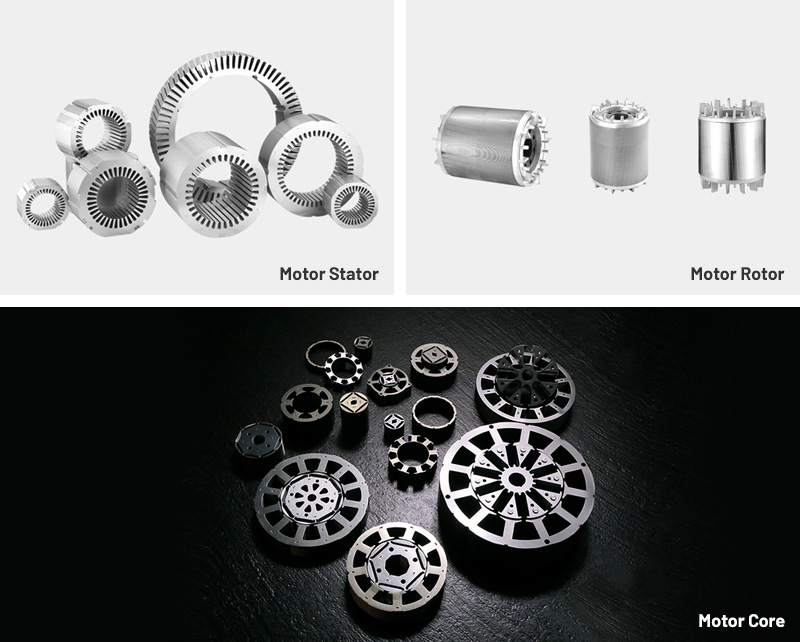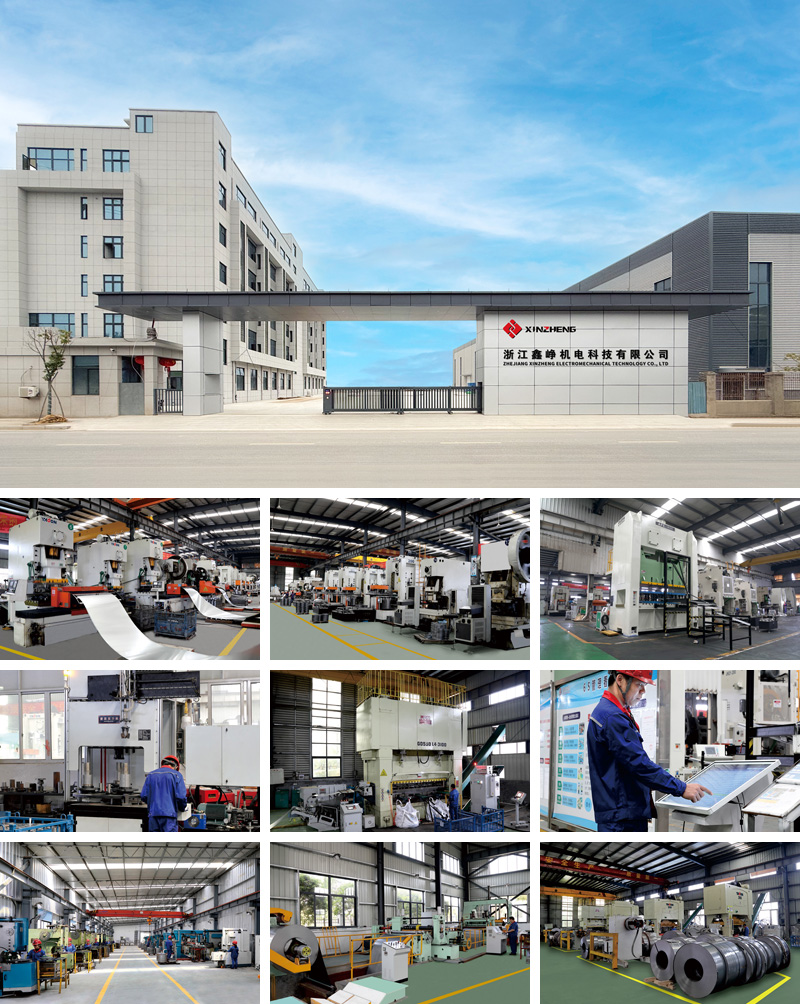Global demand for high-efficiency electric motors continues to rise as industrial sectors adopt stricter energy-performance standards. Regions such as the European Union, North America, Southeast Asia, and the Middle East have mandated minimum efficiency levels for general-purpose motors, making the IE3 efficiency class a mainstream requirement for compressors, pumps, HVAC systems, conveyors, and precision automation equipment.
motor stator laminations—especially those used in the YE3 series—play a central role in achieving IE3 efficiency. They determine the magnetic characteristics, mechanical stability, and operational heat profile of the motor core. As industries pursue reduced life-cycle operating costs, lower carbon footprints, and stable long-term performance, the need for precisely engineered IE3 high-efficiency motor stator laminations continues to grow. Manufacturers capable of producing low-loss laminations with tight dimensional tolerances have become critical contributors to the high-efficiency motor supply chain.
IE3 motors achieve higher performance primarily through reduction of core loss—hysteresis loss and eddy-current loss. stator laminations optimize magnetic flux conduction while preventing circulating currents by using thin, insulated layers of electrical steel. The YE3 series relies on material grades with controlled silicon content, fine-grain structure, and uniform metallurgical properties to minimize these losses.
High permeability enables magnetic flux to pass through the stator with minimal energy loss. Consistent grain orientation and uniform annealing improve magnetic response under variable load conditions. In the YE3 lamination design, magnetic permeability directly influences torque density and peak power output.
The alignment between stator slots and rotor laminations affects flux distribution, air-gap uniformity, and overall mechanical balance. Precision stamping—supported by progressive dies and automated measurement systems—ensures consistent slot shape, stack height, and flatness. These factors help maintain stable motor operation at higher efficiency classes.
High-efficiency motors typically generate lower heat, yet thermal management remains essential. The design of YE3 laminations promotes uniform heat dissipation through optimized lamination thickness, insulation coating, and smooth stacking surfaces. Controlled stack compression reduces vibration and enhances cooling airflow around the motor core.
The YE3 series motor stator laminations are made from cold-rolled non-oriented electrical steel, generally within the M400 to M270 material range depending on performance targets. Key characteristics include:
Thickness options commonly between 0.35 mm and 0.50 mm
Epoxy or inorganic insulation coatings for consistent electrical separation
Optimized slot-to-tooth ratio for improved flux distribution
High stacking factor to enhance magnetic path density
The choice of steel grade and coating affects both energy performance and heat resistance, making materials a fundamental determinant of efficiency.
YE3 stator laminations are engineered for:
Low core loss, enabling compliance with IE3 efficiency standards
High mechanical rigidity, critical for vibration resistance
Stable magnetic performance across different loads and frequencies
Reduced noise, particularly important in HVAC and pump systems
Improved power density due to optimized electromagnetic design
The laminations are manufactured to support long operating lifespans and reduced maintenance intervals, benefiting end users in continuous-operation industries.
A typical production workflow involves:
Material selection and testing
Verification of steel thickness, coating adhesion, magnetic flux density, and core loss values.
Precision stamping or laser cutting
Progressive stamping dies are used for large-scale production, while laser systems provide flexibility for small-batch or custom designs.
Deburring and coating preservation
Smooth edges prevent coating damage during stacking, enhancing insulation performance.
Automated stacking and interlocking
Core stacks must maintain consistent compression and alignment to preserve magnetic properties.
Final dimensional inspection
Tolerances for roundness, slot width, and stack height are closely monitored to ensure compliance with IE3 motor design requirements.
Even slight variations in silicon content, sheet thickness, or rolling precision can lead to inconsistent performance. Reliable suppliers conduct batch-level metallurgical testing to ensure uniformity.
Coating type and thickness influence interlaminar resistance. Poor adhesion or uneven application can lead to increased eddy-current losses and localized heating.
Tooling maintenance is essential to avoid burrs, dimensional drift, or slot deformation. High-quality YE3 laminations rely on continuously calibrated dies.
A higher stacking factor improves magnetic density, but excessive compression may deform laminations or damage coatings. The balance must be controlled with precision.
Annealing improves magnetic properties but requires strict process management to avoid distortion or oxide-layer inconsistencies.
Companies sourcing YE3-grade stator laminations should consider the following factors:
Material traceability: Suppliers must document electrical steel origin, grade, and inspection results.
Tooling capability: In-house die design and fabrication enable tighter control over dimensional accuracy.
Capacity and scalability: For OEM motor production, consistent delivery and quality stability are essential.
Quality management systems: ISO 9001, IATF 16949, and automated inspection processes are indicators of professionalism.
Engineering support: Technical collaboration can help optimize slot shapes, stacking methods, or material selection for specific motor designs.
A strong supplier ecosystem enhances reliability for manufacturers of IE3 motors used in global industrial applications.
Different testing standards or measurement conditions may lead to inconsistent evaluations of lamination quality. Unified testing procedures are essential for accurate comparisons.
Thin electrical steel sheets are prone to deformation, requiring advanced die structures and tension-control systems.
High stamping speeds increase the risk of micro-cracks in insulation coating, affecting long-term performance.
Higher-grade electrical steel improves performance but raises material costs. Manufacturers often seek optimization rather than simply upgrading material grades.
As IE3 motors become mandatory in more regions, suppliers face pressure to deliver large quantities with consistent quality.
The YE3 series laminations are widely used in industrial equipment requiring stable operation and energy-efficient performance, such as:
Industrial pumps for water treatment, petrochemical systems, and HVAC circulation
Air compressors, where efficiency directly influences operating costs
Centrifugal and axial fans for ventilation and environmental control
Gear motors and conveyors used in logistics automation
Machine tool spindle motors requiring precise torque stability
Agricultural mechanical systems, where long duty cycles are common
In each scenario, improved lamination performance contributes to lower electrical losses, reduced heat, and longer motor lifespan.
With IE4 and IE5 motors gaining attention, laminations will require even lower losses and improved material engineering.
New steel grades featuring lower thickness, higher permeability, and improved insulation coatings will support next-generation motor designs.
Automated optical inspection, inline core-loss testing, and digital die-monitoring systems will continue to improve lamination consistency.
Producers are exploring recyclable insulation coatings and environmentally friendly annealing processes to align with global sustainability goals.
OEMs are requesting customized slot geometries, unique stacking patterns, and optimized core profiles to differentiate motor performance.
1. What makes YE3 series laminations suitable for IE3 motors?
They deliver low core loss, high magnetic permeability, and precise dimensional stability—key factors for achieving IE3 efficiency levels.
2. Are thinner laminations always better for efficiency?
Not necessarily. While thinner steel reduces eddy-current losses, cost, mechanical stability, and manufacturing limits must also be considered.
3. How does insulation coating affect performance?
A uniform, durable coating increases interlaminar resistance, reducing eddy-current losses and preventing hotspots in the motor core.
4. Can lamination quality influence motor noise?
Yes. Poor slot geometry or inconsistent stacking can cause magnetic imbalance and audible noise during operation.
5. What industries rely most heavily on YE3 laminations?
HVAC, industrial automation, water treatment, oil & gas applications, and manufacturing plants are among the primary users.
Product Category

Comprehensive Strength


Copyright © Zhejiang Xinzheng Electromechanical Technology Co., Ltd. All Rights Reserved.
This website uses cookies to ensure you get the best experience on our website.